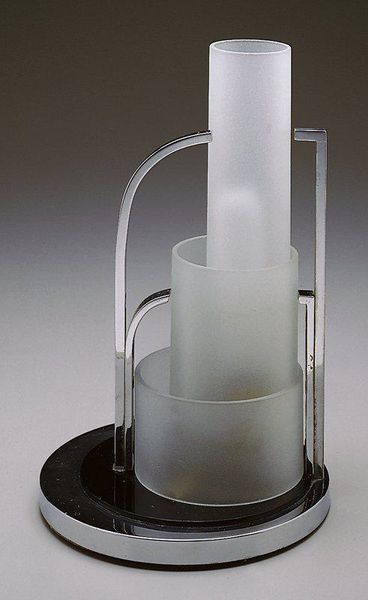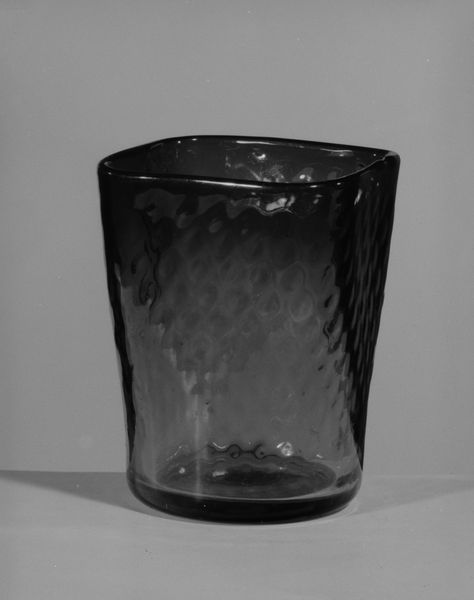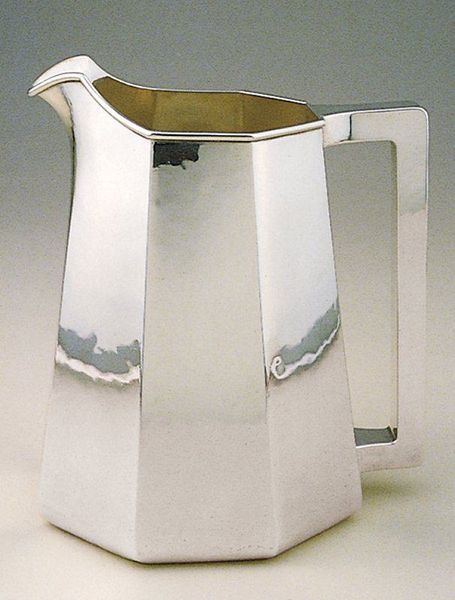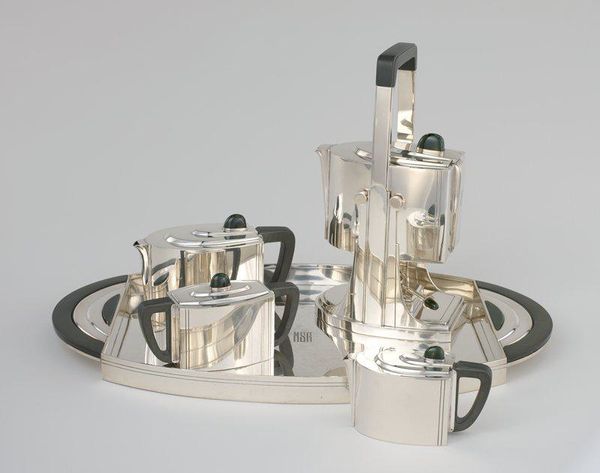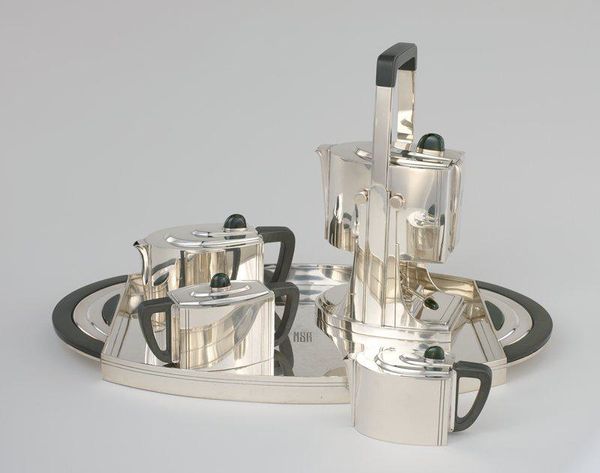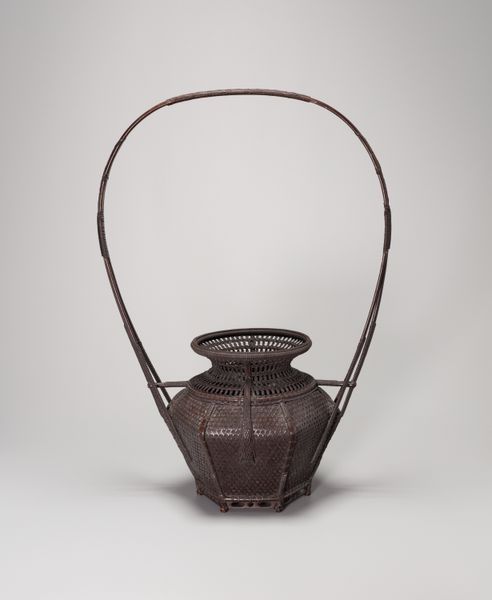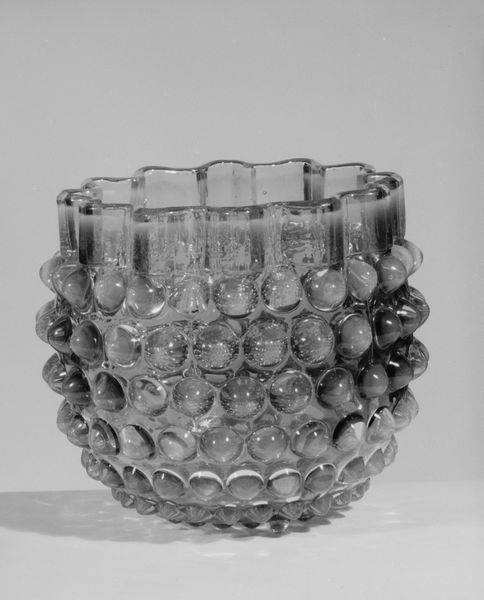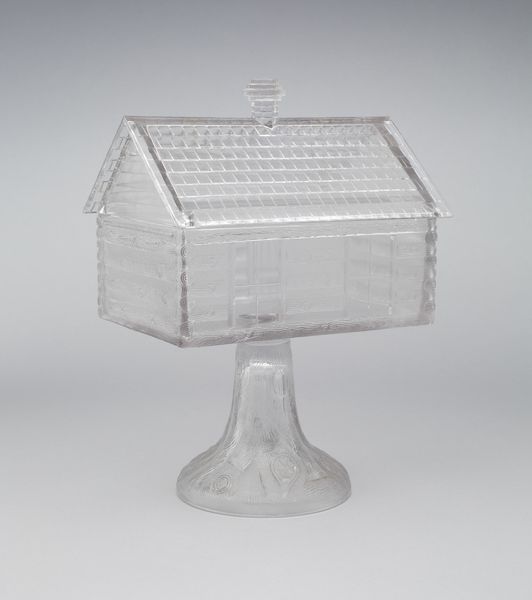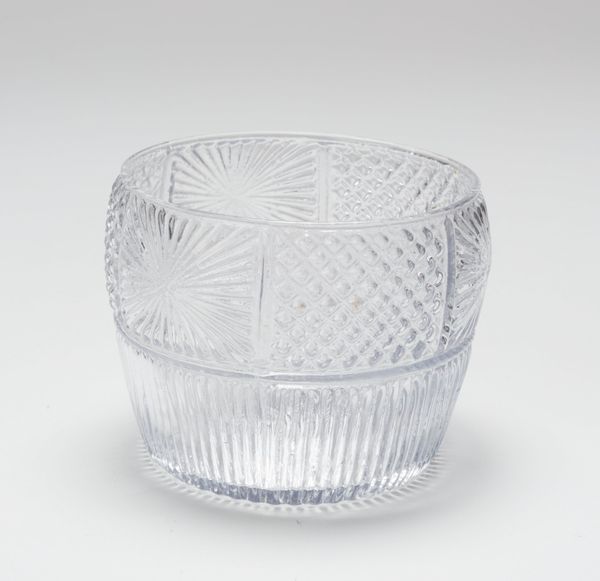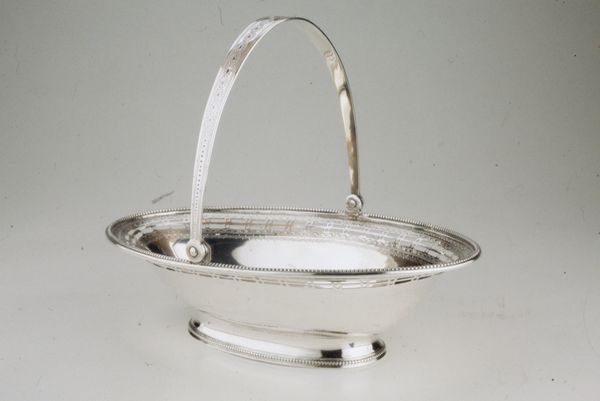
metal, ceramic, glass
#
metal
#
arts-&-crafts-movement
#
ceramic
#
glass
#
ceramic
#
decorative-art
Dimensions: 7 5/8 x 6 3/4 x 6 3/4 in. (19.37 x 17.15 x 17.15 cm)
Copyright: No Known Copyright
Curator: Standing before us is a "Storm Lantern," a striking example of decorative art crafted around 1904 by Josef Hoffmann. It’s currently housed right here at the Minneapolis Institute of Art. Editor: My immediate thought is of controlled light. That frosted glass cylinder nestled within the grid of metal suggests a deliberate, contained illumination. Curator: Indeed. Hoffmann, a leading figure in the Arts and Crafts movement, believed in integrating artistic design into everyday objects. The lantern is composed of glass, ceramic, and metal. The craftsmanship is truly remarkable. We can also examine his social circle to better understand how designers such as Hoffmann were hoping to offer ordinary people well-designed but still beautifully constructed items to elevate the day-to-day lives. Editor: It’s all about the visual rhythm created by that grid. The geometric structure almost acts as a visual filter, softening the harshness of the light and distributing it evenly. Also the way it plays with void and presence makes a captivating form. Curator: Exactly, but look closely at its construction within the socio-cultural context. The geometric forms were perceived as modern alternatives to excessive ornament. They symbolize, and advocate for, simplicity and functionality, reflecting ideals of the time. Editor: Still, I feel the emotional core is in the subtle contrast. The cool rigidity of the metal against the soft, diffused glow of the glass creates tension, yet, harmony. There's a visual poetry in that pairing. Curator: A valuable point. Moreover, consider the rise of electrification and how that affected lighting, or access to it. Designs such as the Storm Lantern spoke of, and often were for the affluent who might be less impacted by new technology and looking to express different sensibilities or affiliations, especially among rising anxieties of technological innovations in turn-of-the-century Europe. Editor: So, it’s not merely a lantern; it’s a testament to the power of design to shape experience. I can see that now. Curator: Precisely. Next time you look around the galleries or your home, maybe start seeing even ordinary items that are imbued with rich cultural ideas, if you're willing to look for it.
Comments
No comments
Be the first to comment and join the conversation on the ultimate creative platform.
